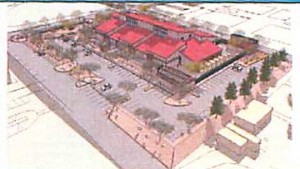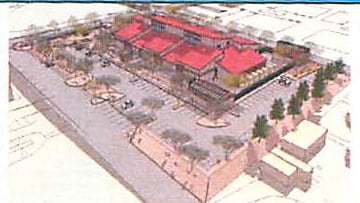11/01/2011 The F-35 is the first significant build of new tactical aircraft in a long time. Correlated with the build is shaping a new infrastructure to support the new fleet. In many cases, the older infrastructure is outdated in and of itself and the new aircraft accompanies needed upgrades to infrastructure.
We saw that with the need to provide a new deck surface for the amphibs and can see that with older basing infrastructure such as what we saw when we visited USMC Yuma Air Station. A new infrastructure is being built for the F-35. The new infrastructure is shaped to support the approach to the overall new weapon system, notably how the simulation centers are going to be used in training, and mission planning. New simulation centers are high technology, electronic centers of excellence that in turn need a proper power and communications infrastructure.
In addition, the F-35 with its C4ISR D system or Z axis capabilities will be maintained and operated out of secure hangers and facilitates. Securing the communications and support built around the ALIS system is a key element of the F-35, which will be protected in part by being located in secure facilities.
During our visit to MAWTS, Second Line of Defense had an opportunity to talk to the SEABEE led construction team at Yuma Air Station. There was considerable enthusiasm in the team and progress was evident throughout the base.
Among the core elements for a new infrastructure being built at Yuma are the following: 2 Aircraft Maintenance Hangers, an Intermediate Maintenance Activity Facility, a Communications Infrastructure Upgrade, a Simulator Facility and a Utilities Infrastructure Upgrade.

There is considerable cross-fertilization among the various infrastructure construction efforts. An advantage of having a global common fleet is that as new infrastructure is crafted, a lessons learned process is generated whereby next iterations of an infrastructure roll out become progressively more cost effective.
As one participant in the roundtable on Yuma construction underscored: “There is a branch in the USMC for lessons learned. And each of these guys here has put together point papers for lessons learned. We are in the process of disseminating our lessons learned through all of the services. This is the advantage of this being born joint. As we have rolled out our first hanger, we have learned about how to build these new secure facilities. And we are in constant dialogue with Eglin regarding their experience as well.”
One of the more interesting observations we can offer is that any delay in rolling out the infrastructure has been caused by the US Government itself and the constant starts and stops in cash flow. As one participant noted: “It is hard to build multiple parts of the infrastructure with contracted construction companies and then you have to idle them and then bring them back on at the same time. They can not work on top of one another.”
In the inside the beltway debate, folks have lost sight of the advantages of fleet commonality within the manufacturing process and seem to have no clue as the very significant capabilities and savings inherent in a lessons learned process for building out the infrastructure to support a common fleet.


